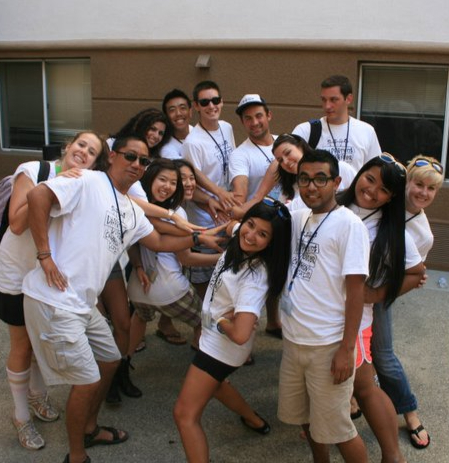Back to Basics: Setting Ground Rules
- Leadership Inspirations Staff

- Sep 9, 2018
- 4 min read
Updated: Oct 22

By: Caelan Cooney

I just watched the Netflix movie To All the Boys I’ve Loved Before (2018), a romantic teen comedy about a girl named Lara Jean who finds herself in a fake relationship with a boy, Peter Kavinsky, at school after a series of love letters she writes are mistakenly mailed. They draft a contract for this relationship with rules like “no kissing” and “no snitching”. I won’t spoil too much for you if you haven’t seen it yet, but the important thing is at the end Lara Jean realizes that there aren’t contracts for the real relationships in our lives.
This got me thinking that while our real friendships and romantic relationships might not require actual rules or contracts, they do benefit from certain “ground rules” - unspoken things like keeping secrets or not cheating. And we can also benefit from those kinds of rules in our working relationships. In fact, I believe that one of the simplest things that we can do to set our groups up for success is to establish and agree on guiding ground rules.
Many organizations have Codes of Conduct or Codes of Ethics that help to outline specific professional behaviors and practices that are required by an organization. Ground rules are less formal and may even be specific to a certain committee, project, or meeting. Ground rules are agreements that we make as a group that communicate how we want to work effectively together.
At Leadership Inspirations, we always start with a “Five Finger Contract”. We have one ground rule for each finger:

Safety – physical, mental, and emotional
The pinky finger represents ‘Safety’ because it’s the easiest finger to break!
Commitment – to our team, our meetings, our process
The ring finger is for ‘Commitment’ because a wedding ring is a symbol of commitment
No Zingers – Zingers are anything that we say that may be considered offensive – swearing, put-downs, name calling and insults, sarcasm, sometimes even inside jokes
The middle finger (which is never to be held up alone!) stands for ‘No Zingers’ because in the United States holding up this finger is considered an offensive insult
Responsibility – Be personally responsible for your own actions! Volunteer yourself, not others
Our pointer finger can be used to point at others, but when we point it at ourselves, it represents personal ‘Responsibility’
Have Fun! – Learning, growing, and developing together as a team should be a fun and enjoyable experience!
A thumbs up means that we’re having a good time! That’s why the thumb stands for ‘Fun’!
Ground rules like these are great for a number of reasons:

They tell you a lot about your group: As a Lara Jean explains to Peter, “It’s important to know where you stand on certain issues.” Ground rules tell you a lot about what is important to your group members - their morals, values, needs, and priorities. Really listen to the ground rules that your group establishes and you will have a lot of clues on how to engage them and make them feel valued.
They establish norms and expectations: Our group cultures are founded in our collectively understood norms and expectations. They help us to know how to behave, how to interact with others, and how to succeed or fail in the group. When these things are understood by all group members we develop a sense of trust, clarity, and interdependent purpose.

They set the tone: The ground rules we agree upon for an ideation session might be different than the ground rules we set for a feedback conversation. This is because these rules help to set the appropriate tone for the work that we will be doing together. It’s important to know the purpose and goals of our group so that our ground rules can be properly aligned to help us to accomplish those things.
They create a safe space: Ground rules provide protection and safety. When we feel protected in a space, we are more comfortable sharing our ideas, expressing disagreement, taking risks, and stepping outside of our comfort zones. All of these things generate participation, motivation, and growth that in turn helps us to accomplish our goals, refine our processes, and cultivate quality relationships.
So, “what’s in a contract for a real relationship?” Anything that you want, really. As long as it’s going to help and not hinder your process. While we may not actually sign on a dotted line, these conversations align our groups so that we can avoid challenges like miscommunication or conflict and operate together as a high performing team. Use our Leadership Lesson below to establish ground rules with your group in your next meeting!

Caelan Cooney has been with Leadership Inspirations since 2015. She got her start in leadership as a high school DECA student and holds a Master’s in Industrial Organizational Psychology and Bachelor’s degrees in Integrated Education and Business Administration. She is currently a Learning Strategist at Hone, a virtual training provider. In her free time, she enjoys hiking, rock climbing, and listening to podcasts.
Favorite Quote: “I am still learning” – Michelangelo

Comments